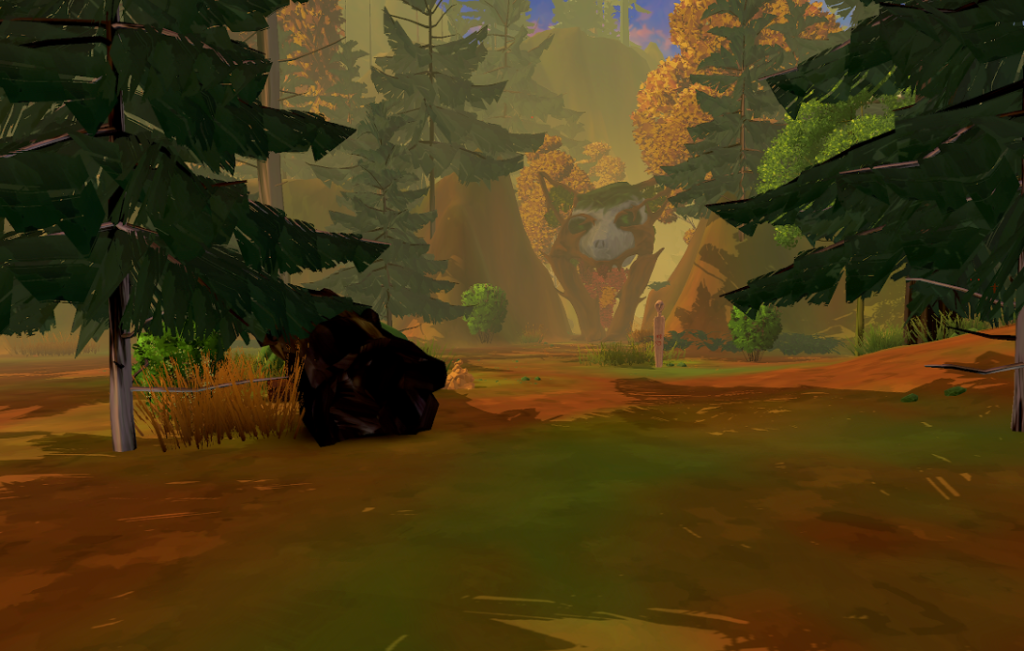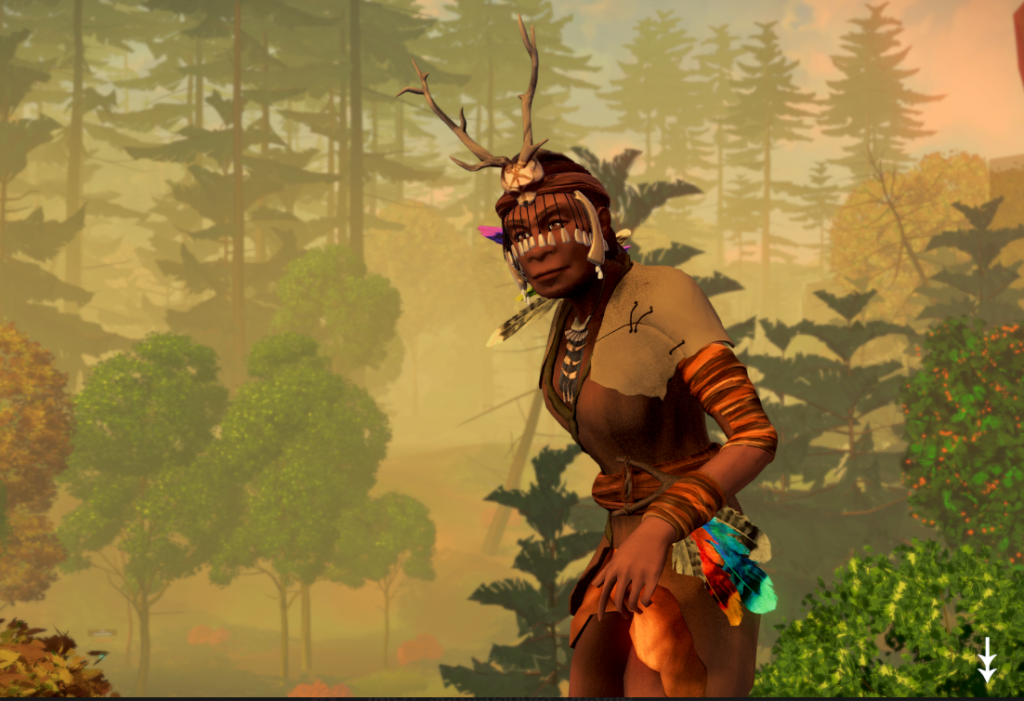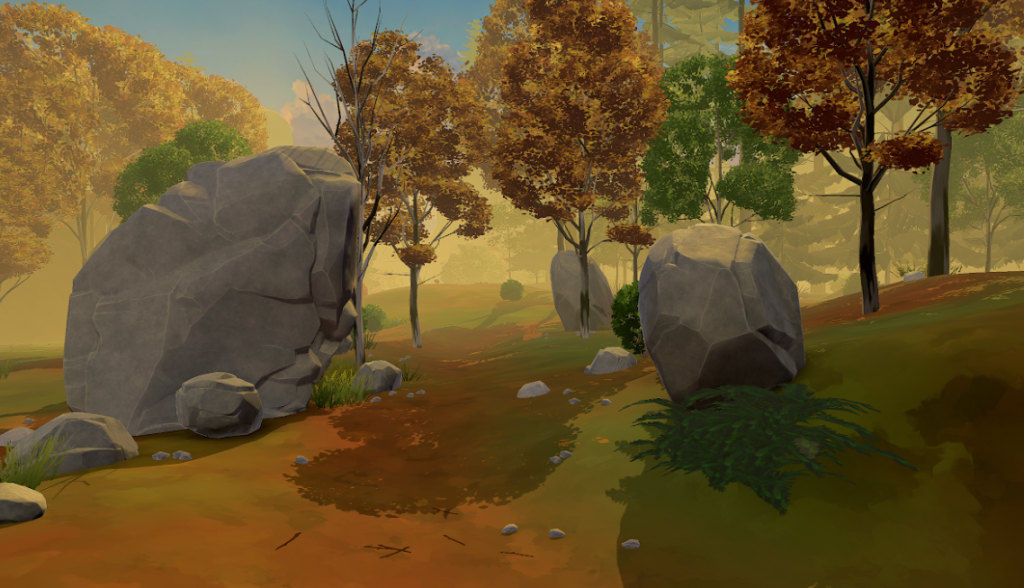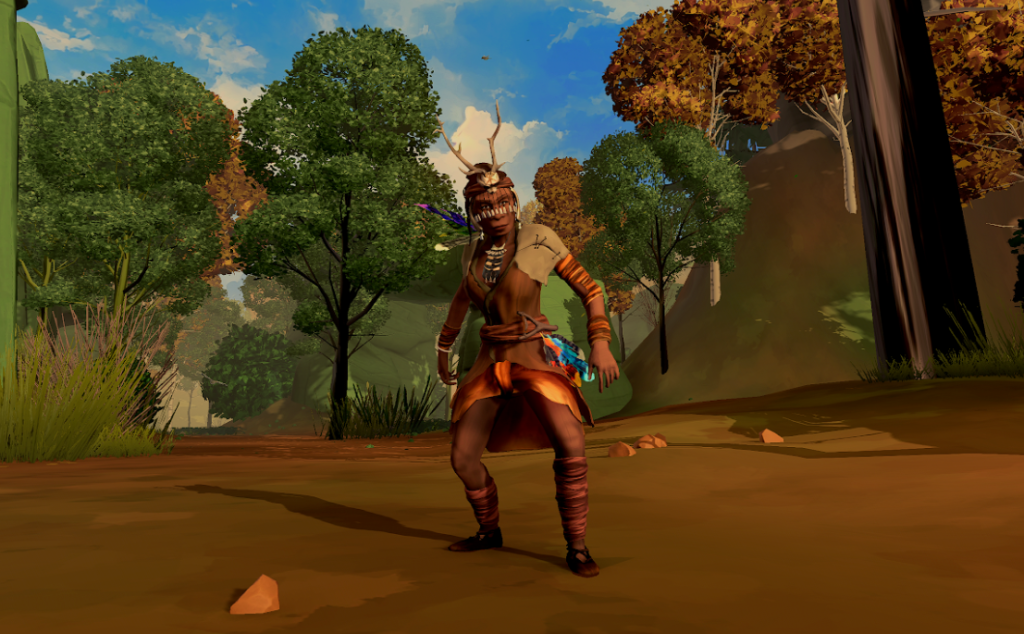I Mother – The Dawn of Communication in a World Without Words
In a world where speech has yet to exist, I Mother takes players on an evocative journey to the very origins of human communication. It’s a world built not on spoken dialogue but on instinct, emotion, and symbol — where every gesture carries weight and every sound becomes a part of a living language. Developed by solo creator Adam Buczek, I Mother is more than a game: it’s an interactive meditation on humanity’s first connection and the fragile bridge between Neanderthals and Homo sapiens.
Exploring Meaning Without Words
At the heart of I Mother lies a radical design philosophy — meaning is not given, it’s discovered. The game refuses to impose an artificial language or provide any form of translation. Instead, players must interpret gestures, symbols, and sounds on their own, turning raw instinct into communication. This mechanic mirrors the dawn of human expression, when thought first took shape through shared experience rather than shared vocabulary.
Each player’s journey unfolds differently because no two people interpret symbols the same way. Developers describe I Mother as an “emergent experience”: a world that evolves according to how the player perceives it. Early playtests confirm that each participant tells a unique story, reflecting their own cultural and emotional instincts. What begins as a survival journey becomes an introspective mirror of humanity’s search for understanding.
The Visionary Behind the Game
I Mother is the creation of Adam Buczek — an award-winning designer, filmmaker, and photographer whose career spans over two decades of storytelling across interactive media. Buczek previously served as European Creative Lead for Xbox and was Managing Director of Skeleton Crew Studio in Kyoto. His creative philosophy centers on emotional immersion and narrative experimentation, blending art, science, and psychology.
In I Mother, Buczek channels this multidisciplinary background to craft an experience that transcends genres. His prior works have earned critical recognition, but here he pushes into uncharted territory — building a world where the player’s curiosity replaces conventional dialogue, and emotional resonance replaces textual narrative.

Archaeological Roots and Symbolic Inspiration
The concept behind I Mother draws heavily on the research of paleoanthropologist Genevieve von Petzinger, whose groundbreaking work revealed that humans across continents used similar abstract symbols for tens of thousands of years. These recurring shapes — dots, lines, spirals, and handprints — suggest a shared symbolic consciousness that predates written language.
I Mother imagines a world where these markings have meaning. Through interactive storytelling and archaeological authenticity, players uncover these same symbols carved into rocks and caves, discovering their meanings by observing patterns and performing actions. It’s a synthesis of science and creative speculation, transforming ancient mysteries into living gameplay mechanics.
A Prehistoric Journey of Survival and Connection
The narrative follows a solitary Neanderthal woman on her journey to reunite with her lost tribe. As she navigates a harsh prehistoric landscape filled with predators, storms, and hunger, she begins to recognize strange symbols painted on stone walls. These markings soon become vital to her survival — guiding her through challenges, rituals, and emotional trials.
Along the way, she encounters signs of another being: a Homo sapiens man whose cave paintings tell their own story. Their paths slowly converge, culminating in a deeply symbolic encounter that fuses two worlds — Neanderthal and human. In a touching final sequence, their shared art depicts a new family, symbolizing the merging of species and the dawn of something greater: modern humanity itself.

Gameplay Mechanics: Learning Through Symbols
Rather than menus or text, I Mother uses symbols drawn from archaeological sources dating between 35,000 and 10,000 BCE. Players must learn their meanings through exploration and action. Every mission is explained through pictograms that, when interpreted correctly, reveal the required steps.
The game features two intertwined mission layers: Storyline Missions, which advance the overarching narrative through cave art, and Symbol Missions, which teach the meanings of pictograms by linking them to practical survival acts. By combining these layers, players build an intuitive understanding of symbolic communication, just as early humans once did.
Senses and Navigation Through Instinct
With no maps or modern tools, players must rely on the protagonist’s primal senses — smell, hearing, and spatial memory. Activating these senses offers subtle directional cues rather than explicit markers, recreating the internal mapping techniques humans once used to navigate vast, unfamiliar landscapes.
This sensory system creates a deeply immersive experience. The player learns to recognize environmental sounds, changes in light, and scent cues as navigational tools. The result is not a challenge of logic but of intuition, where survival depends on the ability to feel rather than analyze.
Emotion as Communication
In the absence of spoken dialogue, emotion becomes language. The protagonist expresses herself through vocal tones, breathing, and physical gestures, each tied to an emotional state. Her reactions to danger, discovery, and loss serve as the player’s only guide to her inner world.
Emotions also play a practical role in gameplay. Using her “WarCry” to fend off predators drains her emotional energy, which she must later restore through meditation or rest. This dynamic transforms emotion into a tangible resource, connecting psychological resilience to physical survival.

The Core Loop: Discovery, Learning, Ritual
The structure of I Mother follows a rhythm that mirrors early human ritual. Each gameplay cycle moves through discovery, learning, performance, and renewal. Players uncover a symbol (“the recipe”), test its meaning through survival tasks, and then perform a climactic ritual or spiritual vision that deepens their understanding. These cycles reinforce the link between knowledge, action, and belief — a cornerstone of human evolution.
Trial Zones and Ancient Artifacts
Beyond the main storyline, players can discover hidden “trial zones” — secluded environments containing puzzles reminiscent of Tomb Raider’s tomb challenges. These involve spatial reasoning, 3D platforming, and environmental problem-solving. Completing them rewards players with collectible fragments of authentic prehistoric art. Each artifact adds another layer to the overarching mystery of ancient humanity’s visual language.
The Birth of Spirituality
I Mother also explores the first glimmers of spirituality. Through dream sequences, land art, and natural phenomena, the game reflects how early humans might have perceived the world as alive with meaning. Mysterious lights, shapes, and natural landmarks take on sacred qualities through context and emotion rather than narrative exposition.
These moments are complemented by short, meditative cutscenes, inviting players to interpret whether what they see is divine or simply nature misunderstood. Spiritual artifacts found nearby reinforce this ambiguity — suggesting that humanity’s first myths were born not from gods, but from awe.
Dreams: The Mind as a Battleground
Dreams form another essential layer of the game’s design, functioning as symbolic “boss fights.” When the protagonist rests, her subconscious replays and reinterprets the day’s events through surreal imagery. Each dream has two components: the “Brain,” which revisits learned mechanics, and the “Heart,” which expresses emotional evolution.
Through these dreamscapes, players confront inner fears — loneliness, loss, and transformation. As she becomes more distant from her tribe and closer to Homo sapiens, the dreams reflect this psychological migration. It’s here that I Mother transcends survival to explore identity itself.

Sound, Silence, and Music
Sound design plays a central role in immersing the player in prehistory. Instead of a continuous soundtrack, the world breathes through environmental audio — rustling leaves, distant thunder, cracking ice, and animal calls. These organic sounds create rhythm and tension without words or melody.
At pivotal story moments, the score composed by Paleowolf blends tribal percussion, ancient instruments, and ritualistic chants. This fusion evokes the raw spiritual energy of early humanity, transforming silence into a medium of emotion. Each tone feels ancient, as if drawn from the memory of the earth itself.
A Game About Humanity’s First Understanding
In the end, I Mother is not just a game but an experience — a philosophical reflection on what it means to communicate, connect, and evolve. By removing language, it exposes how much meaning lies beyond words. Every symbol, sound, and gesture becomes an echo of our shared ancestry, reminding players that communication has always been about empathy and imagination.
As the final drawing fades — a family etched on stone — I Mother leaves us with a profound realization: humanity began not with speech, but with the desire to be understood. And that desire, ancient and unbroken, is still what makes us human.